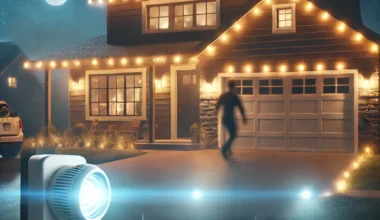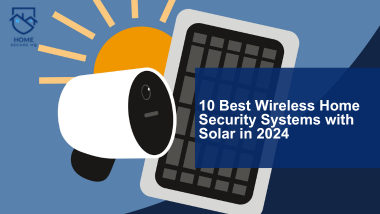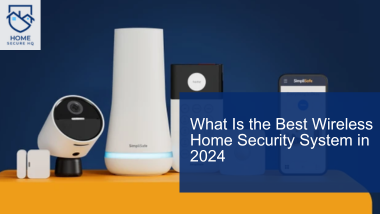A break-in can happen in a split second. Burglars don’t even need a front door; a shattered window is enough. By the time you notice, it could be too late.
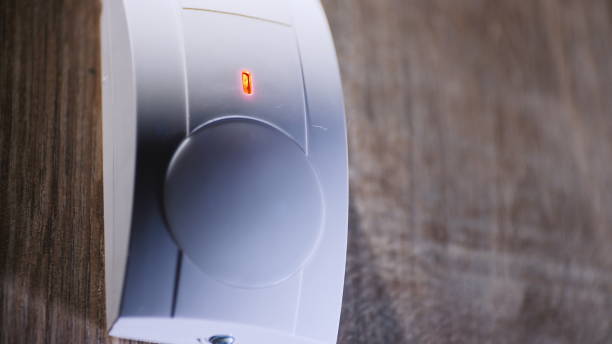
That is why you need DIY glass break detectors now. These smart devices instantly pick up the sound of breaking glass and trigger an alarm, keeping you alert before intruders get inside. Best part? They’re easy to install — no professionals needed!
In this guide, we’ll show you how glass break detectors work, why you must have them, and how you can set them up and running in just a few simple steps.
Let’s get started!
Why Glass Break Detectors Are A Must-Have for Home Security
Most traditional home security systems rely on motion sensors or door/window alarms, which only alert you once the intruder is already inside. But glass break detectors stop them before they even get that far.
Here’s why they’re a must have for your home security:
- Instant Intruder Detection
Glass break detectors recognize the sound frequency of breaking glass. As soon as a window or glass door is shattered, the detector triggers an alarm. This gives you and your family one step ahead before the intruder can even step through the door. - Protects Vulnerable Entry Points
Burglars often target glass doors or windows particularly places where traditional security sensors may not be installed. Glass break detectors protect these vulnerable spots, leaving no entry point exposed. - No False Alarms
Unlike motion sensors that can be triggered by pets or small movements, glass break detectors only react to the specific sound of shattering glass. This means you’ll have fewer false alarms. With this, you can rely on the security of your home without any misleading interruptions. - Works While You’re Away
When at work, on vacation, or asleep, glass break detectors continue working non-stop. Many DIY models connect to your smart home system, giving you luxury to receive instant alerts on your phone. With this, you can rest easy knowing your home is secure even in your absence.
Choosing the Right DIY Glass Break Detector
Not all glass break detectors are created equal. Here’s a simple guide to help you pick the right one for your home.
- Sound vs. Vibration Sensors
There are two main types of glass break detectors:
- Acoustic Detectors: These use microphones to detect the sound of breaking glass. They’re best for larger areas like living rooms or larger storefront windows.
- Vibration Sensors: These attach directly to windows and detect physical vibrations from an impact. They’re perfect for protecting specific windows or doors.
For the best coverage, consider using both types in different parts of your home.
- Coverage Area
Acoustic detectors typically cover a range of 15-25 feet, which is best for larger rooms or open areas. However, vibration sensors need to be installed on each window or door you want to monitor. Consider the layout of your home and select accordingly. - Power Source
There are different power options:
- Battery-Powered: Easy to install and move around as needed. Great for areas without electrical outlets.
- Wired Detectors: Need to be professionally installed but offer continuous power.
- Smart Wireless: Sync with Wi-Fi or smart home security systems that provides alerts directly to your phone.
- Compatibility with Existing Systems
If you already have a home security system (like Ring, SimpliSafe, or ADT), make sure the glass break detector you choose fits right in. This makes it easier to control all your security devices from one app and monitor your home. - Sensitivity Adjustments
Look for a detector where you can adjust the sensitivity to avoid false alarms from things like dropped dishes or door slams
How to Install DIY Glass Break Detectors
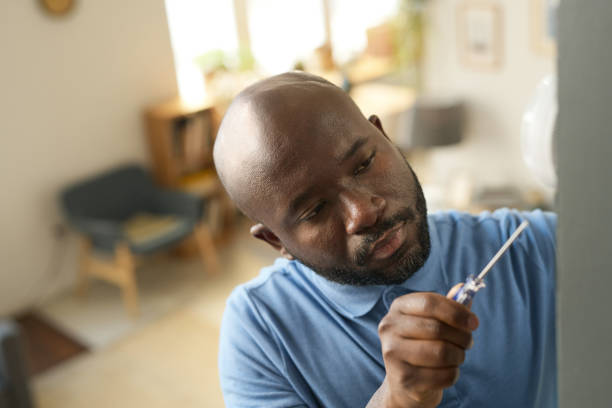
You don’t need to be a pro to install glass break detectors! Here’s how you can get started:
- Choose the Right Location
For acoustic detectors: Mount on a wall or ceiling within 15-25 feet of the windows you’re monitoring. Make sure it has a clear line of sight.
For vibration detectors: Stick directly to the glass on windows or doors you want to protect. - Power It Up
For battery-powered models, insert fresh batteries and power the unit oInsert fresh batteries and turn it on. For wired models, plug it in and check the power source to make sure it’s working. - Adjust Sensitivity Settings
Most detectors let you choose between low, medium, and high sensitivity. Test it by playing a recording of breaking glass (plenty are available on YouTube) and adjust the settings until it only goes off for real break-ins. - Test the Detector
To make sure it works correctly, simulate the sound of breaking glass. You can clap loudly near the sensor, use a glass break sound test app, or tap a glass surface (for vibration sensors). If the alarm doesn’t go off, adjust the settings until it works perfectly. - Sync with Your Security System (if applicable) For smart detectors, connect them to your home’s Wi-Fi or security system. Follow the instructions provided to ensure you get alerts directly to your phone.
Final Thoughts
DIY glass break detectors are an affordable way to add an extra layer of protection to your home. They work faster than traditional security sensors and help stop burglars before they can even get inside.
Installing one of these simple, effective devices can ensure that your home stays safe when you’re asleep, at work, or on vacation. Plus, they’re easy to install, saving you both time and money.
Take action now and protect your home with a DIY glass break detector.
Visit Home Secure HQ for expertise advice on everything home related!



